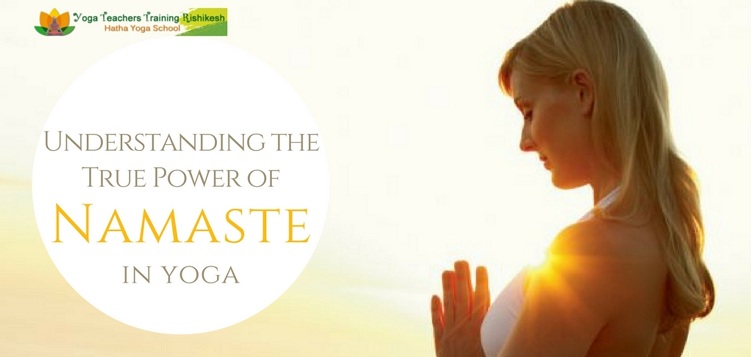The true power of Namaste in Yoga
We greet people whenever we meet them. Namaste is a popular salutation that is no longer confined to India but is also used in other countries. The literal translation of ‘Namaste’ breaks down into three sections: ‘Nama’ means ‘bow’, ‘As’ means ‘I’, and ‘Te’ means ‘you’. Thus, Namaste means ‘I bow to you’ or, in other words, ‘greetings, salutations or prostration to you’.
Most often, one holds hands together in the prayer position at the heart chakra. This gesture acknowledges the soul in one by the soul in another. For a teacher and student in a yoga class, Namaste allows them to come together energetically and connect. A profound union of souls can blossom if it is done with a deep feeling in the heart.

The Importance of Namaste in Yoga
Yoga originated in India about 5000 years ago. Today, many people across the globe practice Yoga, including Indians. However, one may now wonder how ‘Namaste’ is significant in Yoga. Namaste is used twice as a salutation, once at the beginning and once at the end of the Yoga session.
At first, we greet each other by saying ‘Namaste,’ which means welcoming every soul with an open heart. This means the divine spark in one bow is connected to the divine spark of the other. In the end, Namaste repeatedly thanked everyone for practising Yoga with a quiet conscience. The practice of Namaste Yoga implies that we are all one, regardless of any differences. Even the Yoga instructor does not believe he is better than the learners in the class.
Namaste Pose/Prayer Pose
Namaste Pose, also known as Pranamasana, is the starting pose for Surya Namaskar, also called the Sun Salutation. It is an easy and effective Yoga asana that becomes significant as you progress from simple to complex. This pose is often used at the beginning and end of yoga classes, such as Namaste Yoga. The Namaste pose helps to centre the body and mind. This posture also helps strengthen the upper body, reduces tension, and improves blood circulation to the shoulder joint.
How to do the Namaste pose?
- While standing, place the palms together in front of the heart’s centre.
- Allow the shoulders to roll down the back and the elbows to rest at the sides of the rib cage.
- Breathe in normally.
- You can also close your eyes if you’d like.
- A particular mantra is also chanted while practised as a part of Surya Namaskar.
Some precautions that you should take while doing the Namaste pose
- Avoid this posture if you have a chronic or recent injury to your hip or knee.
- Also, avoid this posture if you have elbow problems.
- If you have high blood pressure, avoid this pose.
The benefits of the Namaste pose to the body.
- The Namaste pose positively affects the muscles of the thighs and the nerves.
- Enhances the flexibility of the hips.
- Makes the wrists flexible.
When are you supposed to practice the Namaste pose?
When you reach the Yoga class, you may face some stress or tension from the outside world. Thus, the Namaste pose will help you clear your mind of all worries, allowing you to focus entirely on your yoga practice. It’s the first thing you should do when you arrive at your Yoga class. It is done at the end as well.
Hence, if you practice Yoga as a daily routine, you will be aware of its existence in a way that allows you to forget all your worries. It’s not just an exercise you attend and forget when you leave yoga class. Overall, anyone who dedicates themselves to it will feel a wide range of benefits. Truly, Yoga can be a much-needed retreat from the busy, nonstop lives we lead. Give it a try and enjoy the benefits it has to offer.
